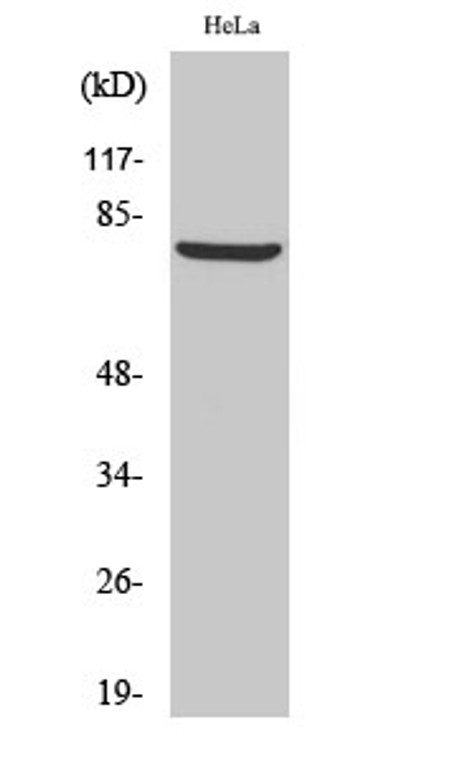| Host: | Rabbit |
| Applications: | WB/IHC/IF/ELISA |
| Reactivity: | Human/Rat/Mouse |
| Note: | STRICTLY FOR FURTHER SCIENTIFIC RESEARCH USE ONLY (RUO). MUST NOT TO BE USED IN DIAGNOSTIC OR THERAPEUTIC APPLICATIONS. |
| Short Description: | Rabbit polyclonal antibody anti-BRCA1-associated RING domain protein 1 (1-50 aa) is suitable for use in Western Blot, Immunohistochemistry, Immunofluorescence and ELISA research applications. |
| Clonality: | Polyclonal |
| Conjugation: | Unconjugated |
| Isotype: | IgG |
| Formulation: | Liquid in PBS containing 50% Glycerol, 0.5% BSA and 0.02% Sodium Azide. |
| Purification: | The antibody was affinity-purified from rabbit antiserum by affinity-chromatography using epitope-specific immunogen. |
| Concentration: | 1 mg/mL |
| Dilution Range: | WB 1:500-1:2000IHC 1:100-1:300ELISA 1:5000IF 1:50-200 |
| Storage Instruction: | Store at-20°C for up to 1 year from the date of receipt, and avoid repeat freeze-thaw cycles. |
| Gene Symbol: | BARD1 |
| Gene ID: | 580 |
| Uniprot ID: | BARD1_HUMAN |
| Immunogen Region: | 1-50 aa |
| Specificity: | BARD1 Polyclonal Antibody detects endogenous levels of BARD1 protein. |
| Immunogen: | The antiserum was produced against synthesized peptide derived from the human BARD1 at the amino acid range 1-50 |
| Function | E3 ubiquitin-protein ligase. The BRCA1-BARD1 heterodimer specifically mediates the formation of 'Lys-6'-linked polyubiquitin chains and coordinates a diverse range of cellular pathways such as DNA damage repair, ubiquitination and transcriptional regulation to maintain genomic stability. Plays a central role in the control of the cell cycle in response to DNA damage. Acts by mediating ubiquitin E3 ligase activity that is required for its tumor suppressor function. Also forms a heterodimer with CSTF1/CSTF-50 to modulate mRNA processing and RNAP II stability by inhibiting pre-mRNA 3' cleavage. |
| Protein Name | Brca1-Associated Ring Domain Protein 1Bard-1Ring-Type E3 Ubiquitin Transferase Bard1 |
| Database Links | Reactome: R-HSA-5685938Reactome: R-HSA-5685942Reactome: R-HSA-5689603Reactome: R-HSA-5689901Reactome: R-HSA-5693554Reactome: R-HSA-5693565Reactome: R-HSA-5693568Reactome: R-HSA-5693571Reactome: R-HSA-5693579Reactome: R-HSA-5693607Reactome: R-HSA-5693616Reactome: R-HSA-6804756Reactome: R-HSA-69473Reactome: R-HSA-9663199Reactome: R-HSA-9699150Reactome: R-HSA-9701192Reactome: R-HSA-9704331Reactome: R-HSA-9704646Reactome: R-HSA-9709570Reactome: R-HSA-9709603 |
| Cellular Localisation | NucleusDuring S Phase Of The Cell CycleColocalizes With Brca1 Into Discrete Subnuclear FociCan Translocate To The CytoplasmLocalizes At Sites Of Dna Damage At Double-Strand Breaks (Dsbs)Recruitment To Dna Damage Sites Is Mediated By The Brca1-A Complex |
| Alternative Antibody Names | Anti-Brca1-Associated Ring Domain Protein 1 antibodyAnti-Bard-1 antibodyAnti-Ring-Type E3 Ubiquitin Transferase Bard1 antibodyAnti-BARD1 antibody |
Information sourced from Uniprot.org
12 months for antibodies. 6 months for ELISA Kits. Please see website T&Cs for further guidance









